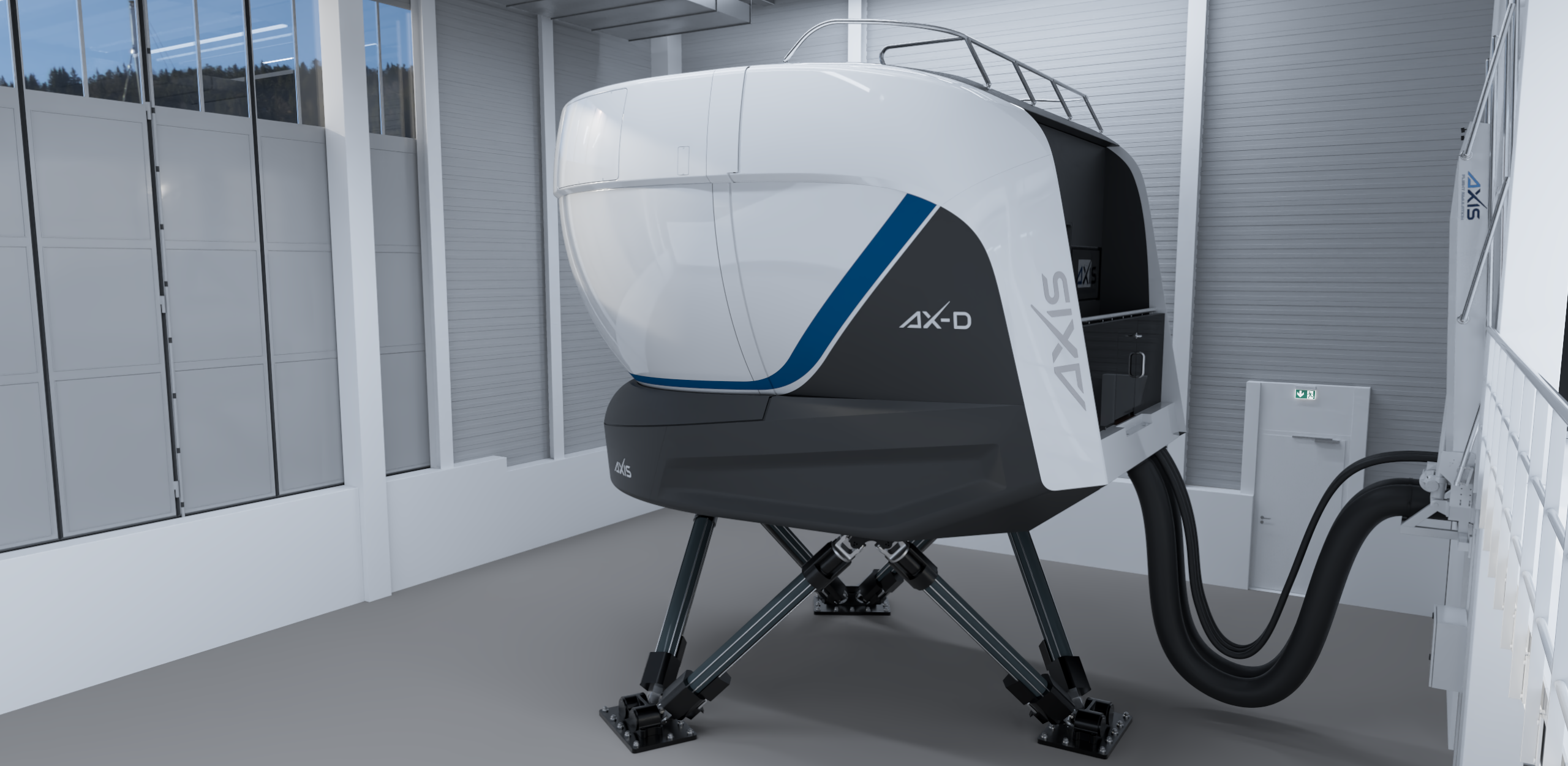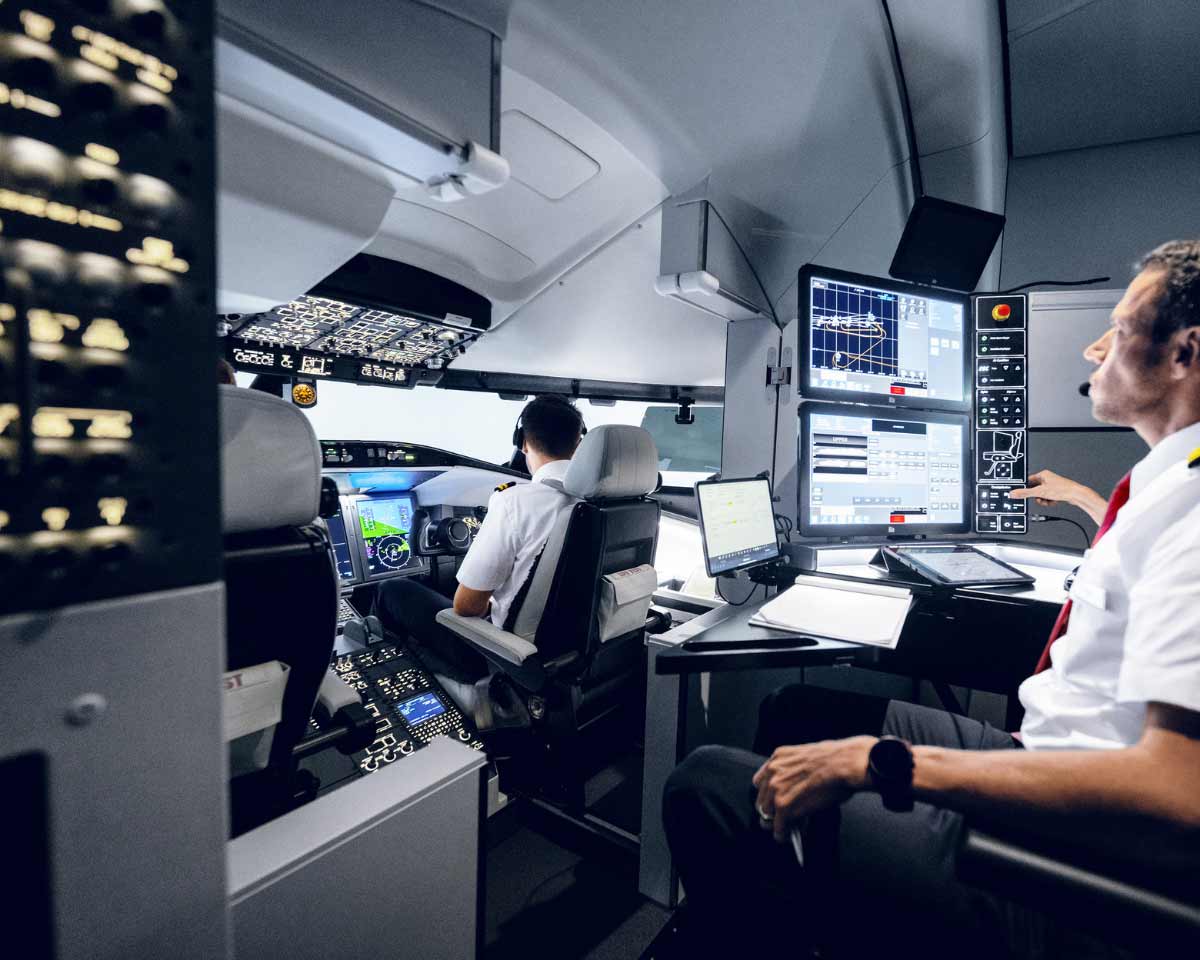August 20, 2025
Flight simulator redesign: how to shape the future of training
Q&A with Helmut Haslberger, Director Hardware Engineering and Production Management, on the AXIS redesign.

Flight simulator redesign: how to shape the future of training
At AXIS Flight Simulation, we believe innovation is most powerful when it solves real-world challenges. That thinking drove the recent redesign of our full flight simulator (FFS) range, a project developed in collaboration with award-winning design studio formquadrat.
The result is a simulator cabin that blends striking, contemporary design with a practical modular build, making it easier to manufacture, transport and maintain. It’s more than a visual update – it’s a smarter, more adaptable platform for operators and training organisations worldwide.
We sat down with Helmut Haslberger, Director Hardware Engineering and Production Management, to explore the rationale behind the flight simulator redesign, the process that brought it to life and what it means for the future of simulator training.
Q: What sparked the idea for the flight simulator redesign?
A: Our main driver was to improve both the customer experience and our own production process. In flight simulation, efficiency matters as much as performance. The redesign allows us to streamline manufacturing, enabling faster build times and earlier delivery. By rethinking the structure, we can pre-manufacture certain modules, which means operators receive their simulators sooner and with less disruption to their training schedules.
Q: Why did you decide on a modular design? What are the benefits for operators?
A: The modular approach marks a significant step forward in how our simulators are built, maintained and upgraded. From production efficiency to day-to-day operation, it enhances the entire product lifecycle. Modular components make servicing straightforward, as individual sections can be accessed or replaced without interrupting the whole system. It also simplifies shipping and installation, particularly in facilities with restricted access.
By standardising modules, we can keep costs predictable and reduce lead times for upgrades or replacements, whilst delivering more uptime and greater training availability for operators.
Q: How long did the flight simulator redesign process take and who was involved?
A: The design phase moved quickly because we had a clear vision from the start. Our in-house engineers worked closely with the formquadrat team, whose industrial design expertise and familiarity with aviation technologies helped accelerate the process. Incorporating formquadrat’s detailed design suggestions added valuable refinements to the concept, enhancing both the look and usability of the simulator.
Interestingly, the redesign didn’t take longer than building a standard simulator, demonstrating that innovation doesn’t have to slow production.
Q: What’s your favourite aspect of the new design?
A: For me, it’s the combination of aesthetics and practicality. The black base gives the simulator a solid, stable presence, while the sleek railings add a modern, professional finish. I also love that we’ve created a dedicated space for each customer’s branding. It’s a small detail, but it allows operators to make the simulator feel uniquely theirs, which is important for training centres that want to project professionalism and pride.
Q: How do you see this redesign impacting the future of AXIS’ simulators?
A: This redesign sets a new baseline for how we approach development. While the simulator is visually striking, its real strength lies in a structure engineered for long-term flexibility. As training requirements evolve and technology advances, we can integrate new features into the existing framework without having to start from scratch. It’s a sustainable approach that future-proofs the investment for our clients.
Q: And finally – what would your ‘dream’ flight simulator have in it?
A: From a professional standpoint, I’d say it would merge extreme realism with intuitive accessibility, allowing users to seamlessly go from startup to shutdown. It would offer immersive training scenarios that go beyond standard protocols, allowing pilots to hone skills in a wider variety of conditions. And of course, it would be built to last, adapting to new technologies without losing operational efficiency.
Redesigning our FFS reflects our commitment to innovation, focusing on what matters most to operators: efficiency, flexibility and reliable performance. By combining a modular structure with a modern look, we’ve created a simulator that’s easier to build, simpler to maintain and more adaptable for the future – ensuring our customers can deliver world-class training for years to come.
Read more about the unveiling of our redesigned simulator here.


